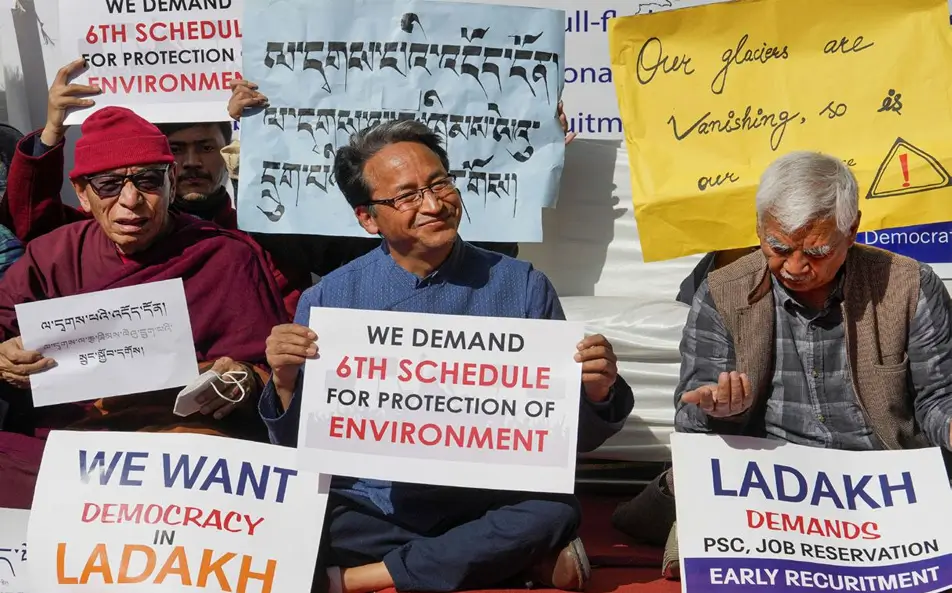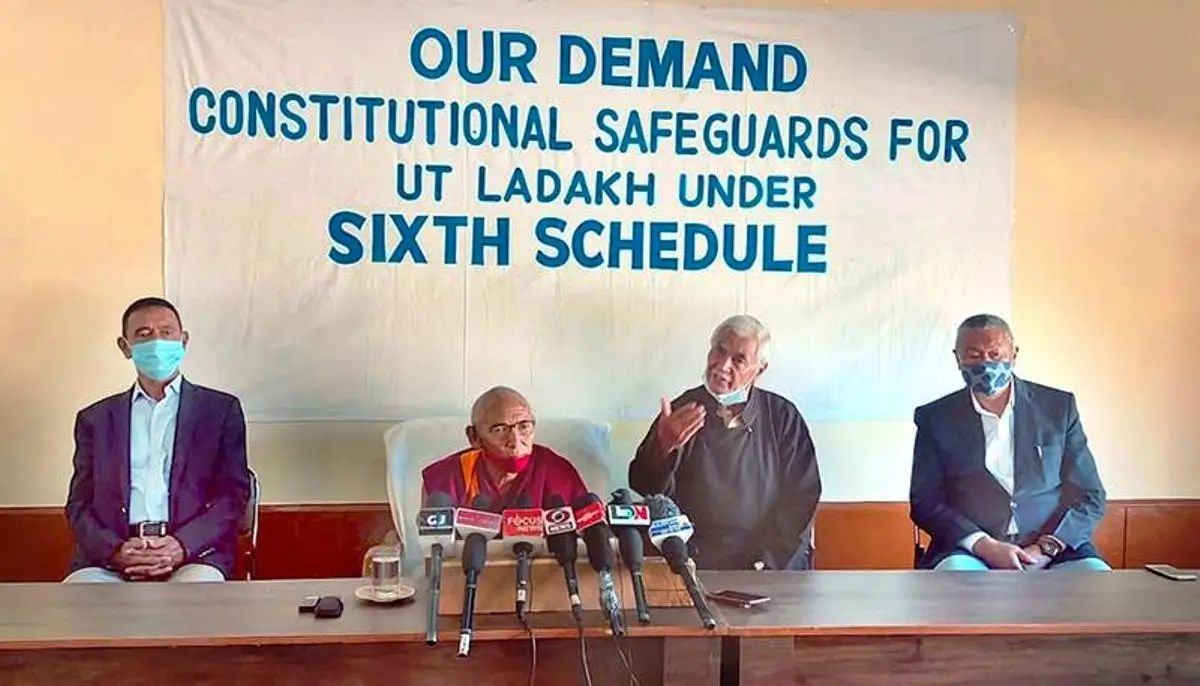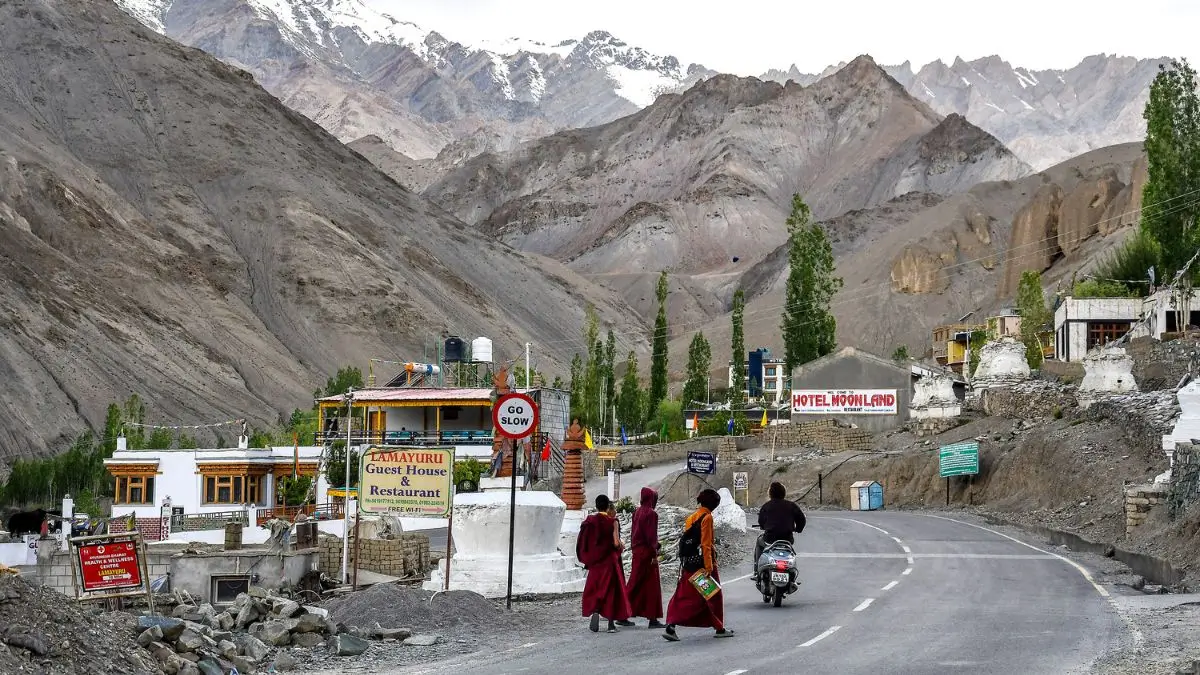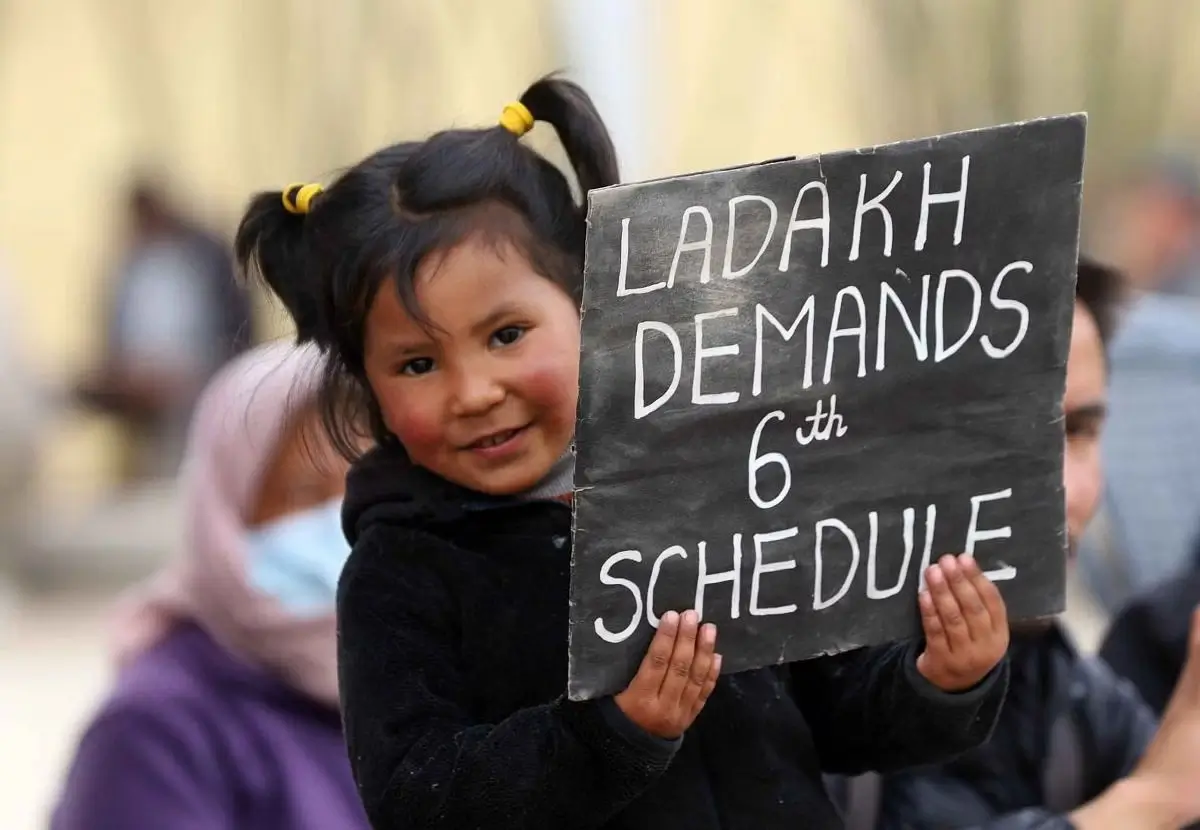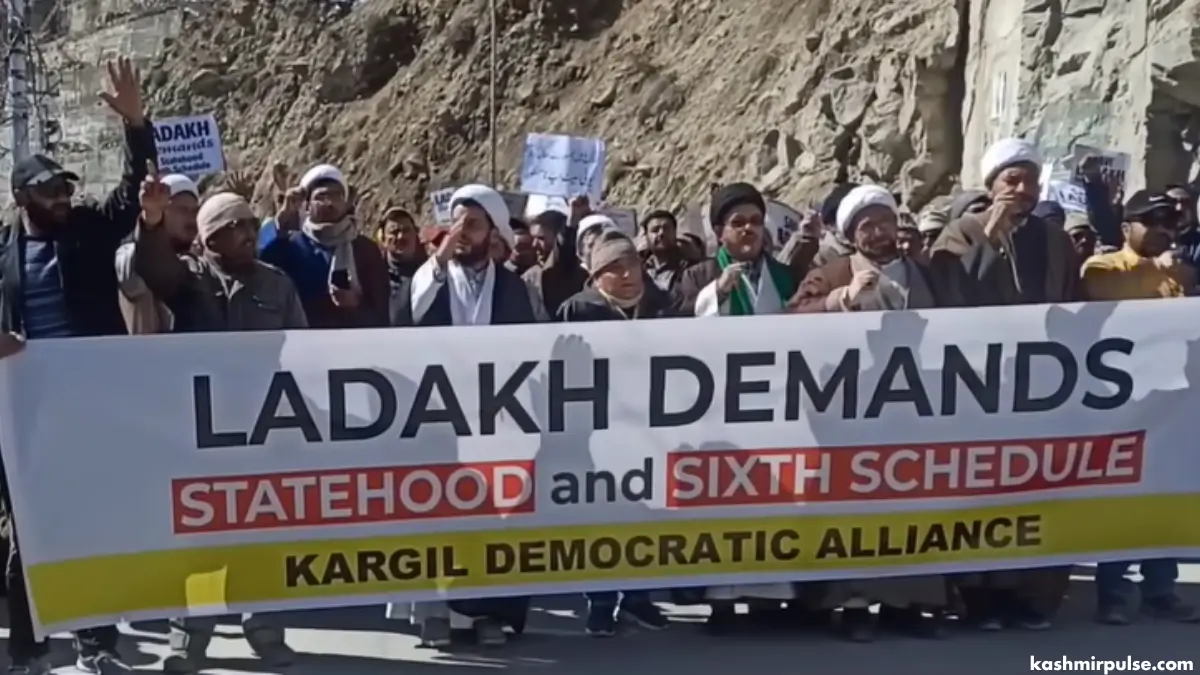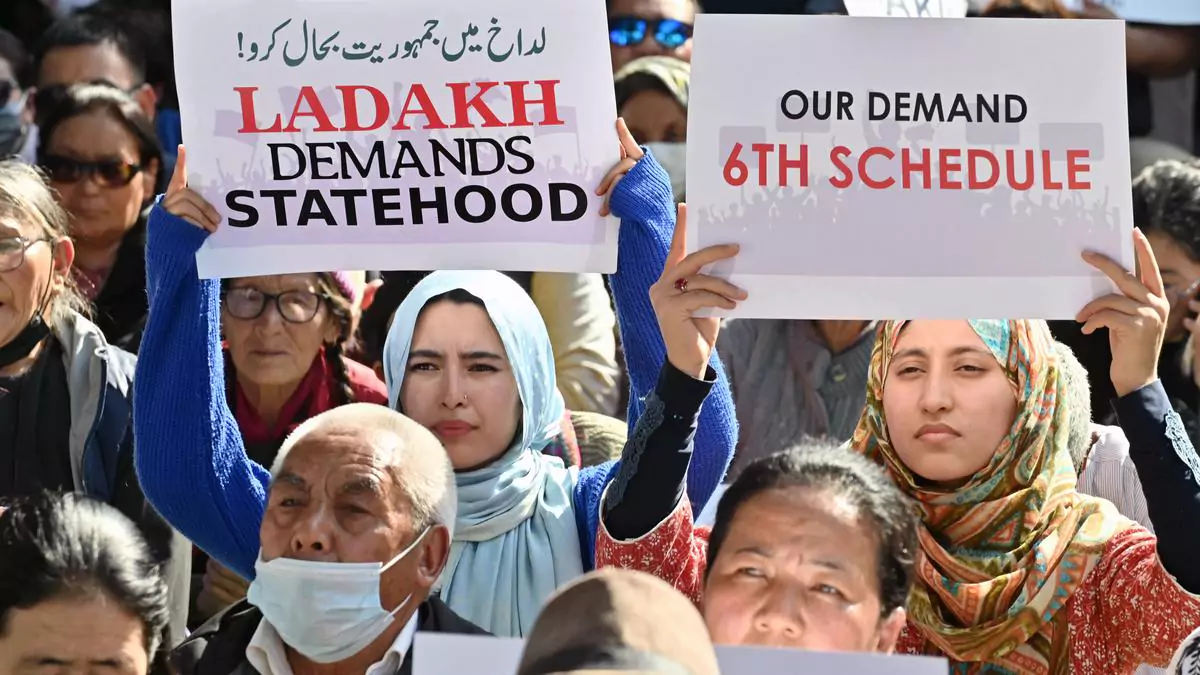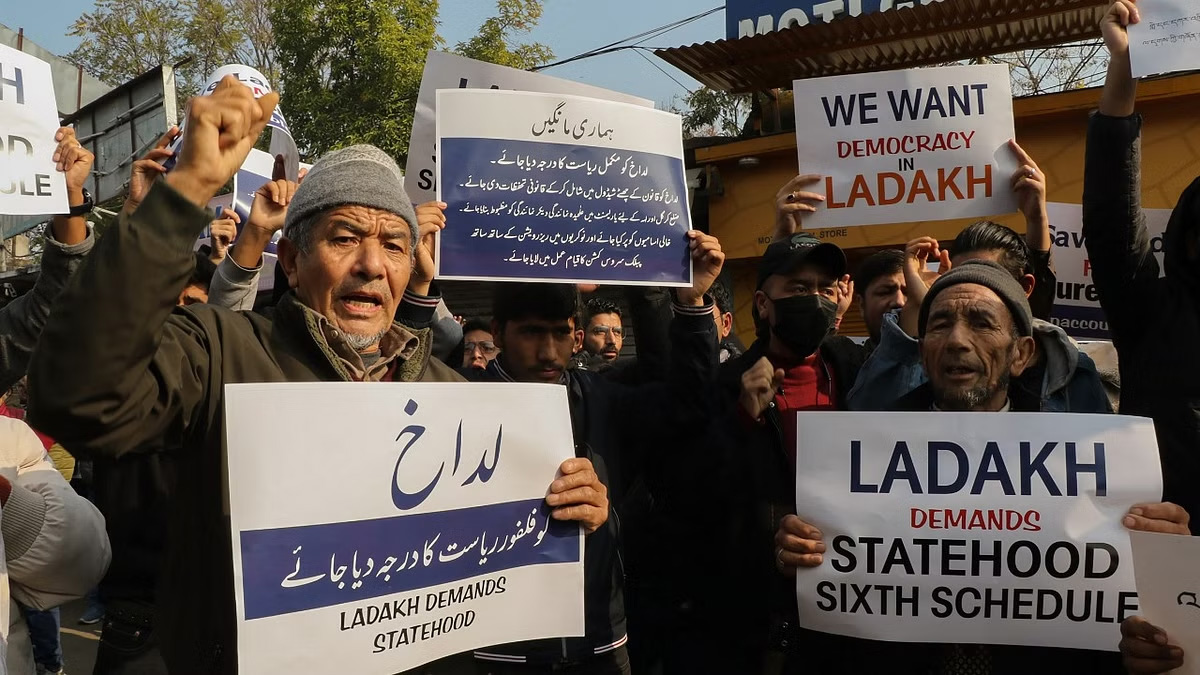
The United Indian

Ladakh, a region known for its stunning landscapes and unique cultural heritage, has recently been at the center of significant political discourse in India. The demand for the inclusion of Ladakh under Sixth Schedule of the Indian Constitution has sparked widespread debate, public protests, and considerable media attention. This article delves into what the Sixth Schedule is, why there is a demand for it in Ladakh, the protest led by renowned environmentalist Sonam Wangchuk, and the Indian government's perspective on this issue.
Understanding the Sixth Schedule
The Sixth Schedule of the Indian Constitution provides for the administration of tribal areas in the northeastern states of Assam, Meghalaya, Tripura, and Mizoram through Autonomous District Councils (ADCs) and Regional Councils (ARCs) in areas with a high concentration of tribal populations. These councils have legislative, executive, and judicial powers to manage their affairs in accordance with their customs and traditions. The primary objective is to protect tribal communities and their unique way of life, ensuring their socio-economic development and political autonomy.
Ladakh, a region known for its stunning landscapes and unique cultural heritage, has recently been at the center of significant political discourse in India. The demand for the inclusion of Ladakh under Sixth Schedule of the Indian Constitution has sparked widespread debate, public protests, and considerable media attention. This article delves into what the Sixth Schedule is, why there is a demand for it in Ladakh, the protest led by renowned environmentalist Sonam Wangchuk, and the Indian government's perspective on this issue.
Understanding the Sixth Schedule
The Sixth Schedule of the Indian Constitution provides for the administration of tribal areas in the northeastern states of Assam, Meghalaya, Tripura, and Mizoram through Autonomous District Councils (ADCs) and Regional Councils (ARCs) in areas with a high concentration of tribal populations. These councils have legislative, executive, and judicial powers to manage their affairs in accordance with their customs and traditions. The primary objective is to protect tribal communities and their unique way of life, ensuring their socio-economic development and political autonomy.
Key features of the Sixth Schedule include:
- Autonomous Councils: These bodies have the authority to legislate on various subjects like land, forest management, agriculture, and village administration.
- Judicial Powers: Autonomous councils can establish village courts to resolve disputes according to customary laws.
- Revenue Collection: These councils have the power to levy and collect taxes, fees, and tolls to fund their functions.
- Cultural Preservation: The councils play a crucial role in preserving the cultural identity and heritage of tribal communities.
Why The Demand for Sixth Schedule in Ladakh?
Ladakhis, with an estimated 97% tribal population, have been seeking similar autonomy and protection under the Sixth Schedule. They believe Ladakh Sixth Schedule status inclusion would bring several benefits
Key Concerns Driving the Demand for Sixth Schedule Status in Ladakh:
- Cultural Preservation: Ladakh has a distinct cultural identity, with its unique traditions, languages, and Buddhist heritage. There is a fear that the influx of outside influences and economic changes could erode this cultural fabric.
- Land and Resource Protection: The local population is concerned about the potential exploitation of their land and natural resources by external entities without adequate safeguards.
- Political Autonomy: Ladakh argues that the current UT administration doesn't adequately represent their interests. Ladakh Sixth Schedule status would empower them to make decisions on issues critical to their way of life. There is a desire for greater self-governance and local control over administrative decisions affecting the region.
- Economic development: Ladakhis believe they can better manage their resources and create job opportunities for the local population if they have greater control over development projects.
The demand gained momentum after Ladakh was separated from Jammu and Kashmir and made a Union Territory (UT) in August 2019. This reorganization was welcomed by some for its potential to bring more direct governance and development funds to the region. However, it also raised concerns among the local population about losing control over their land, culture, and resources.
Sonam Wangchuk’s Protest
Sonam Wangchuk, an internationally acclaimed engineer, education reformer, and environmentalist, has been a vocal advocate for the Sixth Schedule in Ladakh. He is best known for his innovative work in education and sustainable development in the region. According to Sonam Wangchuk, the locals believe that being listed on the Sixth Schedule status, Ladakh will give them more influence over the laws governing their union territory.
Reasons Behind His Protest:
- Environmental Concerns: Wangchuk has raised alarms about the fragile ecosystem of Ladakh, which is highly susceptible to climate change. He argues that local governance under the Sixth Schedule would be more attuned to the needs of the environment.
- Sustainable Development: Wangchuk believes that local autonomy would enable Ladakh to pursue development that is sustainable and respects the region’s ecological and cultural limits.
- Cultural Preservation: He emphasizes that protecting Ladakh’s cultural heritage requires empowering local institutions that understand and value these traditions.
Protest Actions
In January 2023, Wangchuk undertook a five-day fast in sub-zero temperatures at Khardung La, one of the highest motorable passes in the world. This protest aimed to draw national and international attention to the demand for the Sixth Schedule status for Ladakh. His fast garnered significant media coverage and sparked widespread support from various sections of society.
We are making two appeals: the first is for global residents to alter their habits in order to lessen hardships in their local communities. According to clauses like the Sixth Schedule, local and national governments can simultaneously grant sovereignty to the local population, enabling indigenous groups to manage their mountains sustainably and guaranteeing democratic decision-making and advancement, Sonam Wangchuk claimed.
The Indian Government's Perspective
The Indian government's response to the demand for status of Sixth Schedule in Ladakh has been cautious. While acknowledging the unique cultural and environmental concerns of the region, the government has not yet committed to granting Sixth Schedule status. Here's a breakdown of some potential considerations:
Government's Key Arguments:
- Existing Measures: The government points to existing measures aimed at protecting Ladakh’s interests, such as the creation of the Ladakh Autonomous Hill Development Councils (LAHDC) for Leh and Kargil. These councils have certain powers over local administration and development.
- Development Focus: Emphasis has been placed on accelerating infrastructure and economic development in Ladakh to improve living standards and connectivity.
- National Security: Given Ladakh's strategic location, the government has to balance local autonomy with national security considerations.
Broader Implications and Future Prospects
The demand for Sixth Schedule in Ladakh is part of a broader discourse on balancing development with cultural preservation and local autonomy in tribal regions across India.
Implications for Other Regions
- Precedent Setting: If Ladakh were granted Sixth Schedule status, it could set a precedent for other regions with similar demands.
- Policy Framework: It might prompt a reevaluation of the policy framework governing tribal areas and the integration of their development needs with cultural and environmental protection.
Future Prospects
The future for Ladakh Sixth Schedule status demand will likely depend on several factors:
- Dialogue and Negotiation: Continued dialogue between local leaders, activists, and the government will be crucial. Finding a middle ground that addresses both development needs and cultural preservation will be key.
- Public Mobilization: Sustained public support and mobilization can keep the issue alive and pressure the government to take action.
- Legislative Action: Ultimately, any change would require legislative action, possibly through an amendment to the Constitution.
Conclusion
The demand for Sixth Schedule in Ladakh represents a critical intersection of cultural preservation, environmental sustainability, and political autonomy. The protest led by Sonam Wangchuk has highlighted these issues and brought them into the national spotlight. While the Indian government acknowledges the unique challenges faced by Ladakh, it remains to be seen how it will balance these with broader strategic and developmental objectives. As this discourse evolves, it will serve as a vital case study in the ongoing effort to harmonize local autonomy with national integration in India's diverse and complex socio-political landscape.
Read more in Government Sector
May 28, 2025
TUI Staff
May 22, 2025
TUI Staff

Stay Tuned with The United Indian!
Our news blog is dedicated to sharing valuable and pertinent content for Indian citizens. Our blog news covering a wide range of categories including technology, environment, government & economy ensures that you stay informed about the topics that matter most. Follow The United Indian to never miss out on the latest trending news in India.
©The United Indian 2024

